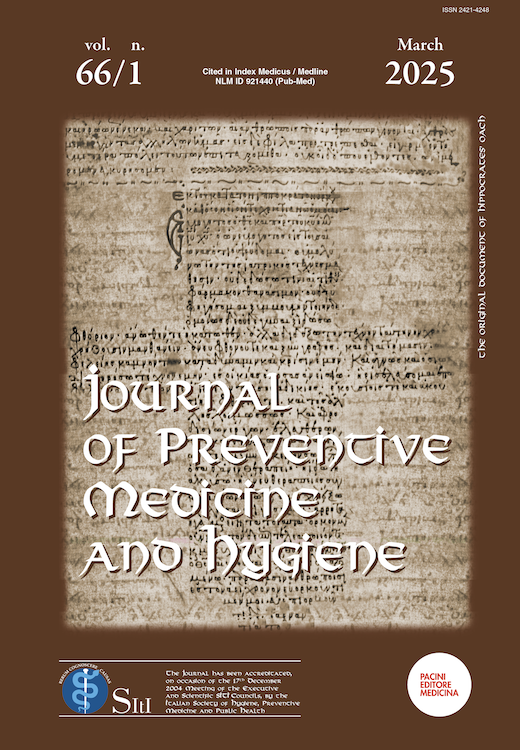Abstract
Background: Climate change and globalization have heightened the risk of vector-borne diseases (VBDs) in Europe, including Italy. VBDs cause over 1 billion cases and 1 million deaths annually, accounting for 17% of all communicable diseases worldwide. With competent vectors present, effective control measures and surveillance are vital. This study assessed adults' knowledge, attitudes, and practices regarding Arbovirus infections.
Methods: An 11-question survey targeting individuals aged 18 and over at the LHU Roma 1 vaccination clinic evaluated knowledge and experiences with Arbovirus diseases. Data were coded and analyzed.
Results: Of 308 participants, 58.1% were female, 63.65% had no children, and 84.1% held a degree or higher. Tick-Borne Encephalitis (TBE) was the most recognized disease (65.9%), followed by Zika (52.3%), while West Nile virus risk in Italy was underestimated (20%). Dengue awareness was high (91.6%), but Usutu awareness was low (47.4%). Vaccination was supported by 93.8%, with the 41-50 age group most willing to vaccinate children. Overall, knowledge of Arbovirus diseases was limited.
Conclusions: Public awareness of VBDs and preventive measures must improve to support effective risk prevention strategies. Education campaigns are essential to address gaps in knowledge and promote informed decision-making.
References
Epicentro. Arbovirosi. Istituto Superiore di Sanità. [Internet]. [cited 2024 Dec 2]. Available from: https://www.epicentro.iss.it/arbovirosi/
Tabachnik WJ. Ecological effects on arbovirus-mosquito transmission. Curr Opin Virol. 2016;21:124–31. doi: 10.1016/j.coviro.2016.08.007
Calisher CH. Medically important arboviruses of the United States and Canada. Clin Microbiol Rev. 1994;7(1):89–116. doi: 10.1128/cmr.7.1.89
World Health Organization. Dengue and severe dengue. [Internet]. [cited 2024 Dec 2]. Available from: https://www.who.int/health-topics/dengue-and-severe-dengue#tab=tab_1
Angelini P, Soracase M. Sorveglianza e controllo delle arbovirosi. Ecoscienza. 2021;1:1–12.
Centers for Disease Control and Prevention. Dengue. [Internet]. [cited 2024 Dec 2]. Available from: https://www.cdc.gov/dengue/index.html
Elder J, Lloyd L. Achieving behaviour change for dengue control: methods, scaling-up, and sustainability. Report of the Scientific Working Group on Dengue. 2006;140–9.
Rogers B, Bunn WB, Connor BA. An update on travel vaccines and issues in travel and international medicine. Workplace Health Saf. 2016;64(10):462–8. doi: 10.1177/2165079916655114
IBM Corp. IBM SPSS Statistics for Windows, Version 20.0. IBM Corp, Armonk. Released 2011.
Vasilakis N, Tesh R. Insect-specific viruses and their potential impact on arbovirus transmission. Curr Opin Virol. 2015;15:69–74. doi: 10.1016/j.coviro.2015.08.007
Steffen R, Chen LH, Leggat PA. Travel vaccines—priorities determined by incidence and impact. J Travel Med. 2023;30(7):taad051. doi: 10.1093/jtm/taad051
Istituto Superiore di Sanità. West Nile virus: situazione e prevenzione. [Internet]. [cited 2024 Dec 2]. Available from: https://www.iss.it/-/west-nile-virus-situazione-e-prevenzione-1
Grignolo A. Chi ha paura dei vaccini? Codice Edizione. 2016; 208 p.
Pellizzoni L, Biancheri R. Scienza in discussione? Dalla controversia sui vaccini all’emergenza Covid-19. Milano: Mimesis; 2020.

